|
|
| Several RC magazines around the world have asked us to write a monthly column. With the kind permission we will re-publish the column at our web site too so all of the XRAY fans can read the latest news and behind the scenes information. Enjoy. |
|
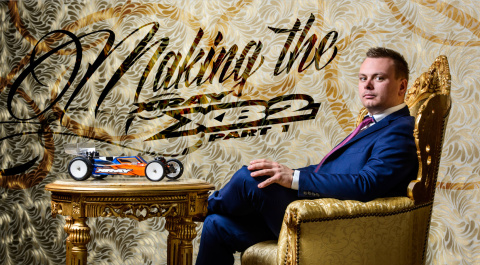
(click to enlarge) |
|
| Making the XRAY XB2: Part 1 â“ By Martin Bayer |
|
Never before had I expected that designing an RC car would be such a complicated, complex, difficult, stressful, and extremely time-consuming thing to do.
Really, I could tell you nightmare stories first-hand as the soon-to-be-released XB2 is my first real-life entire project that I have worked on, and it was a challenge that gave me to a whole new level of understanding and appreciation of the RC car world. |
|
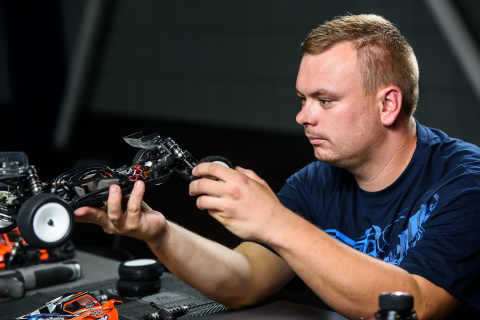
(click to enlarge) |
|
| How did I get here? |
|
I joined Team XRAY several years ago not only to race their cars, but also to be part of the development team. As I live fairly close to XRAY, I knew I could be involved in the daily operations and part of the projects in â�real time.â™ But let me tell you one thing â“ if you know someone who is a perfectionist, someone who strives for absolute perfection â“ then multiply that several times and you may get close to XRAYâ™s level of perfectionism. But only close.
To work with XRAY and with Juraj, I had to adapt to this mentality and extremely fast work pace. There are not many days when you actually can take a short break. But now having gone through all that pain, I can understand and appreciate everything that much more. I learned so much, words alone cannot describe.
Here is a glimpse of my project that I worked on. |
|
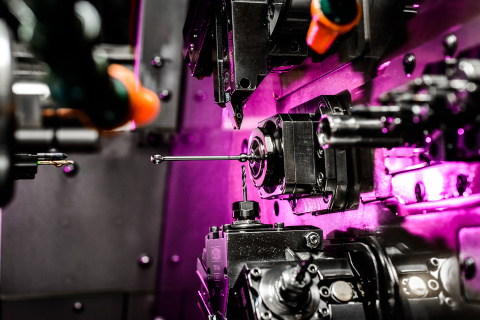
(click to enlarge) |
|
| First Project |
|
| My first involvement in R&D started a few years ago with working on the new XB8 platform. I was testing various parts, working on the optimum suspension & chassis flex, and I learned everything and was reporting back to the factory. Any ideas on new parts or modifications were turned into new prototypes which I tested again & again, and this was the way we moved onward. The re-release of the XB8 platform was very successful, and only then I realized how rewarding it was to be part of something so successful. After my fruitful participation on this project, I became directly involved in the XB4 platform which was already designed at that time and as such I became responsible for further development of this car. My work on the XB4 culminated in the recently-released 2016 spec version of the XB4 with which Bruno Coelho won the World Championship in Japan only a few weeks ago. I have been very happy with the progress of my involvement in R&D, and the results could not be any better. But certainly the great results are only rewarded by hard work (and sleepless nights). |
|
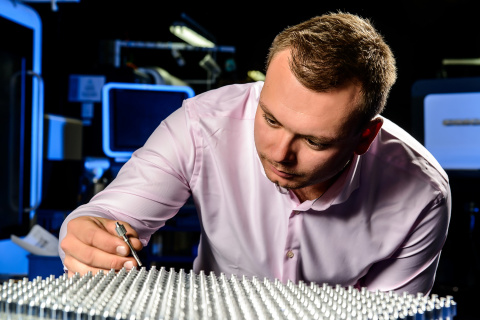
(click to enlarge) |
|
|
|
| As I became more involved in R&D, my daily routines changed. I did not run the cars to seek the best set-up nor learn the best race lines any more. Now I was more focused on understanding and learning the design approach of every single part, and their interaction and final effect on handling and performance. This gave me a completely new perspective. I learned every single detail that influences the car such as material specifications, flex characteristics, machining tolerances, and quality control as well as having to consider production efficiency restrictions and the manufacturing process from our incredible in-house manufacturing team at the XRAY Factory. |
|
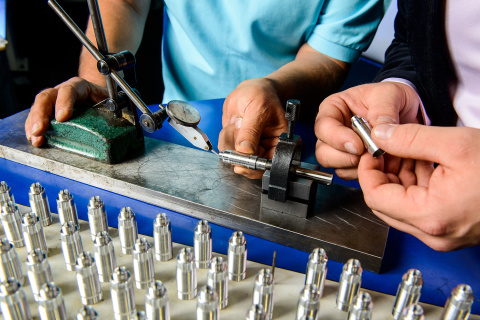
(click to enlarge) |
|
| New Challenge |
|
After gaining my first experiences with working at XRAY, I became more & more involved in R&D work. Then the day came when I faced my biggest challenge to date â“ I was asked by Juraj if I wanted to work on the new 2WD 1/10 off-road buggy, and take responsibility for it. Without thinking about it for a second I agreed to it! (Some days, though, I wonder if I had signed a deal with the Devil that day.)
|
|
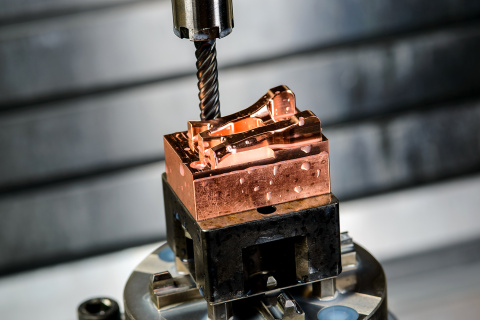
(click to enlarge) |
|
| XB4 2WD Project |
|
When the first XB4 was released a few years ago, the team had started to travel to the 1/10 off-road races and we needed a 2WD car to race with. As such, the fastest solution was to convert the XB4 into 2WD, and if the car worked out well we planned to make it available for all customers. Our idea was to use as many parts from the XB4 as possible, to minimize the spares needed by most drivers. We believe that most drivers would appreciate that consideration.
|
|
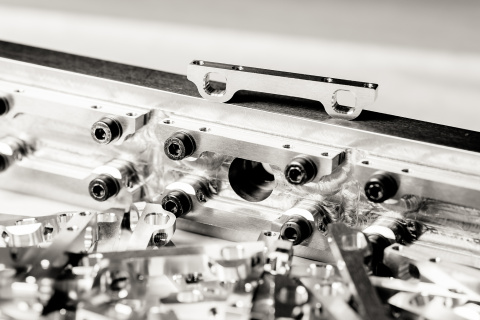
(click to enlarge) |
|
|
|
The first XB4 2WD prototype was made very quickly, and it was doing surprisingly well especially in high-traction conditions on carpet and astro. In some races the car was outperforming everyone else and I could even win some of the EOS rounds. However in other track conditions we had to work very hard to just stay competitive. The main struggle was due to the fairly heavy front suspension which worked great for 4WD but was an obstacle in 2WD because not only the weight but also the geometry was not optimal. Moreover, the more we tested various weight balance configurations, the more we were convinced that we would need a completely different and specifically-designed 2WD platform for regular drivers to keep up with and beat the ever-increasing competition.
|
|
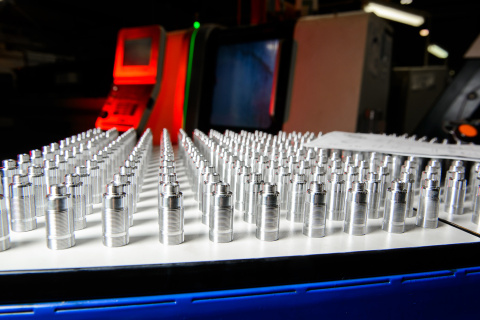
(click to enlarge) |
|
|
|
In the last few years, the competition level has been increasing tremendously and we had to keep up. No matter how hard we tried to stay up to date with the XB4 2WD, there was no other way than to make a purpose-built 2WD off-road car.
|
|
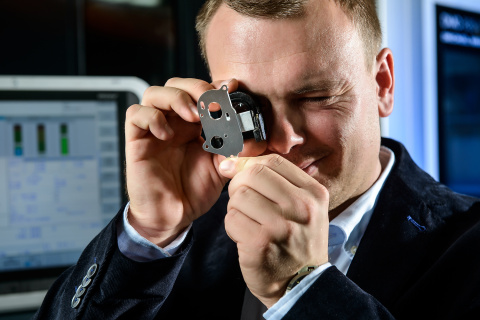
(click to enlarge) |
|
| Pure 2WD Project |
|
Based on our experience with the XB4 2WD, we knew exactly what we wanted to achieve and we knew what we had to avoid, but unfortunately we missed the most crucial decision in the very beginning. Not only the XB4 2WD but probably all the other cars in the market at that time were working well in some particular track conditions, but were not so good in others. In other words, we believe that there was not a 2WD car that could work best in all different track conditions. We wanted to outperform everyone and we wanted to make one car that would work great everywhere, and so we set a very high target.
|
|
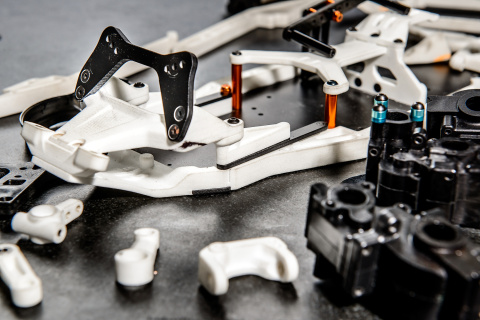
(click to enlarge) |
|
|
|
Now I know that that decision cost us more than a year of development going back & forth. Only now I know that we set the most difficult goal right from the very start. To design one 2WD off-road car that would work in all track conditions ⓠfrom high-traction carpet & astro ⦠to medium-to-low traction clay tracks ⦠to super-low traction, dusty tracks ⓠseemed at one point almost impossible. But did we give up? No, but it took us several years of blood, sweat, and tears to achieve that lofty goal.
|
|
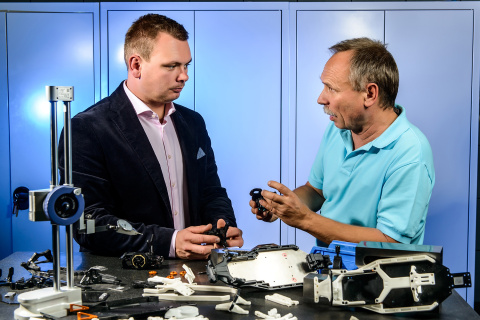
(click to enlarge) |
|
|
|
Before we started work on the XB2, I had to think about all the smallest details that we needed to make adjustable. Making changes when the design is finished is a serious time waster, not only from a financial point of view. At this point I started to realize how much responsibility a designer carries on his shoulders. Any small detail forgotten or any small mistake could cost us hundreds of hours of redesign time for the platform, which would set us back again.
|
|
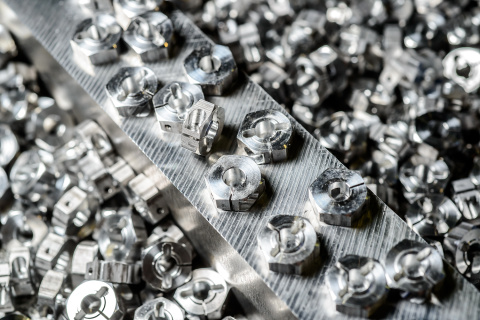
(click to enlarge) |
|
|
|
The pressure and stress were really high, but luckily I was supervised by Juraj. We discussed every detail and every idea I had, and thanks to his masterful wisdom and experience we eliminated a lot of problems that arose. Juraj was the one who immediately started to challenge the thinking of my approaches leading me to think in different ways and different perspectives about every part, to be mindful of all related details but also to keep everything open for future modifications or options. At a later stage, Juraj started to share with me his vast experience of production, which I continued to be amazed by as the projects evolved.
|
|
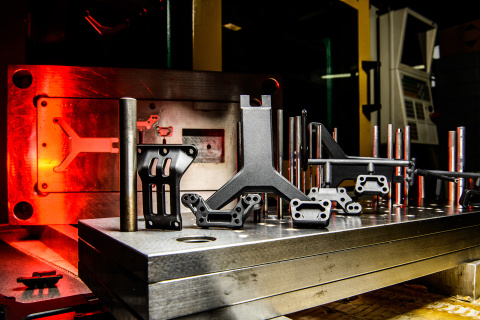
(click to enlarge) |
|
|
|
Every single part I first had to discuss with Juraj from a production point of view. He introduced me to relationships with production techniques: which shapes are feasible to produce, and which designs would be either impossible to produce or would be so expensive that they would not be economically feasible. So I was constantly learning and absorbing information, and my brain started to look at things and problems in different ways. And all through this, we were moving forward. Despite a lot of pressure being on me, those days were the ones that saw huge leaps forward in my understanding of RC car design and production.
|
|
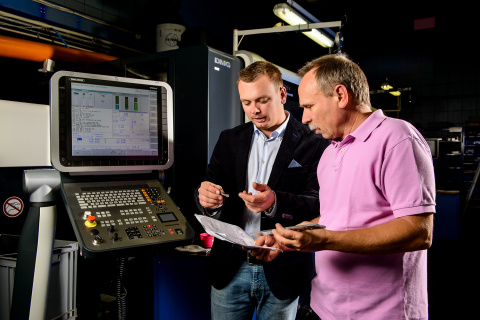
(click to enlarge) |
|
| Prototype #1 |
|
To make the prototype quickly, we designed & made rapid prototypes for only the rear part of the car; we used the front suspension from the XB4. (Later on we learned that that was a mistake.) The first prototype featured a motor mount with various mounting alternatives and you could install it either in the middle or in the rear of the car and either on left or right side.
|
|
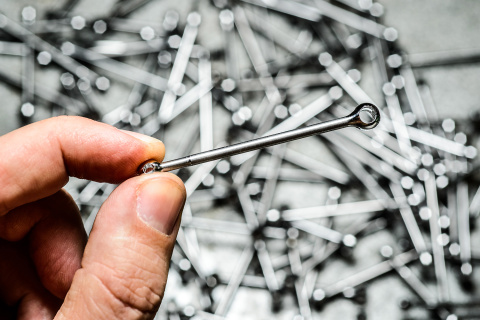
(click to enlarge) |
|
|
|
To allow the motor to be installed in the rear of the car behind the rear suspension, the top shaft had to be placed higher which increased the CG which helps in the dusty, low-traction conditions since the weight is mostly in the back. With the high CG, the car had too much traction on carpet tracks and it rolled too much. I expected that the car would be good in dusty conditions thanks to the design of the motor mount, but whatever I did the performance was not as expected on dusty tracks. The mistake we made was focusing too much on the rear of the car, and not working on the front suspension nor paying enough attention to the chassis flex.
|
|
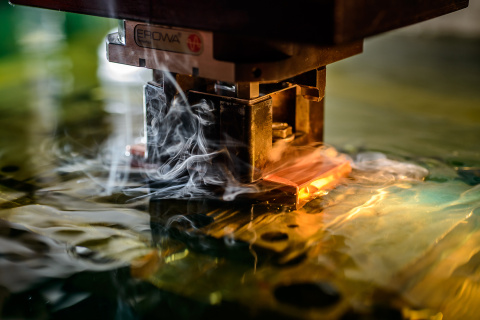
(click to enlarge) |
|
|
|
After extensive testing and spending a few months on this version, we dismissed it â“ even though versions of this prototype were used successfully at EOS races, we knew we needed to work on other areas of the car for other racing conditions. Later on we realized that it was not a 100% good decision either. Now I know that if we had focused on proper chassis and side guard flex as well on the front suspension flex & geometry at that time, it could have saved us up to a year of development. But hindsight is a wonderful thing, and we only know this now after we went through all the challenges so all that hard work has not been totally lost (thankfully).
|
|
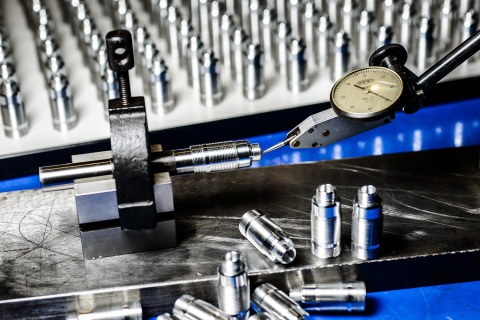
(click to enlarge) |
|
| Prototype #2 |
|
For the second version of the XB2, we decided that we needed to test a full car with everything. This prototype stage took the longest time as the engineers had to draw all the parts, and then all parts had to be produced. After brainstorming with Juraj and considering our previous experience with the motor mount with upper top shaft position, we went in an opposite direction and went with the top shaft down which lowered the motor and entire CG. Our intention was to have the gear box adjustable so we could shift the motor and weight frontwards / rearwards which has significant influence on handling between low, medium, and high-traction conditions. Then we wanted to adjust the car to specific conditions with different chassis, side guards, and different suspension materials.
|
|
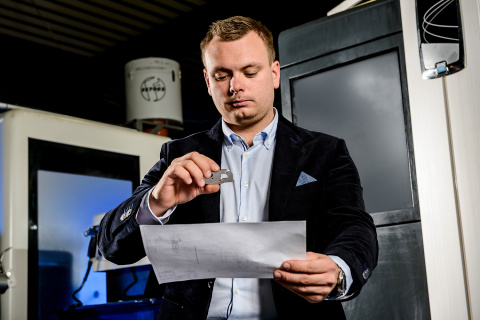
(click to enlarge) |
|
|
|
We knew that we could not do serious testing with only rapid prototype parts, because they had completely different flex and characteristics than the standard composite parts. For this reason we decided that we need to invest the time & resources into moulds, but instead of very expensive and precise mass production steel moulds Juraj decided on rapid aluminum moulds which are CNC machined with the shape of the parts. These aluminum moulds are much faster to produce economically, but do not get mislead. To produce even these aluminum moulds takes several hundreds of hours each, despite them being suitable only for small quantity production.
|
|
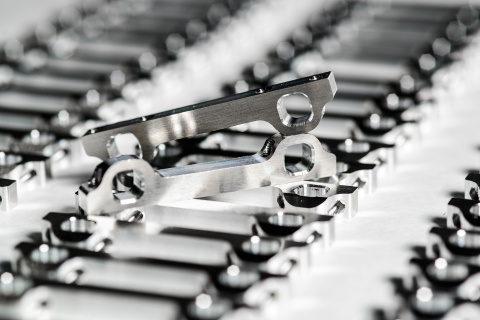
(click to enlarge) |
|
|
|
In total we needed to make 11 moulds to be able to test the car and it took several months until all the moulds were produced. When the moulds were finished the real alchemy started. Composite mixtures are what make the characteristics of the car what they are, they have a direct impact on the carâ™s performance, consistency (batch after batch), and on-track reliability and strength. XRAY is known worldwide for their own self-developed special composite mixtures, particularly from their on-road classes where much of XRAYâ™s development took place over many years with huge focus on flex characteristics and the effect on overall traction. Being involved in this stage of the project, I never realized that you can make one composite mixture in dozens of different ways and ratios, changing some part of mixture by just a few % results in a completely different product. Of course I am not allowed to elaborate any further details. It took Juraj many years of trial & error testing of dozens (if not hundreds) of different mixtures until he developed his very own mixture recipes.
|
|
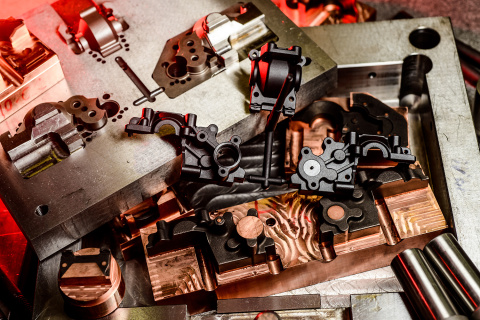
(click to enlarge) |
|
|
|
As the recipes are confidential like Coca-Cola™ recipes, I was not involved in all details but I received each composite part made from various mixtures, each labeled with a code for back identification. At one point I had dozens of different combinations of parts on my desk and needed to test and understand each of them and their influence on the track and only after that looking for the best combinations. If one mixture was good for a suspension arm it did not have to be the same for the side guards. And what worked well on carpet might not work so well on clay. Of course by then I already had experience from the previous project, and Juraj gave me good guidance and divided all the various parts in three categories: medium, hard, and extra-hard to make the life easier for me. We knew that hard composites would work on high-traction tracks (carpet/astro) while the medium composites were best suited to low-traction tracks, so I did not have to lose time testing something that we already knew wouldnâ™t work.
|
|
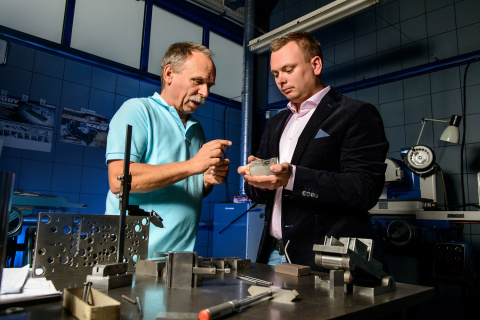
(click to enlarge) |
|
|
|
My job then was to test all the suitable composite mixtures and their combinations to select the ones I liked for myself. I couldnâ™t believe that such small differences in composite mixtures had such significant influence on how the part works on the track. With a huge pile of composites to test, I literally spent hundreds of hours testing different combinations and making notes on every one of them. To make sure that my results were not influenced by improper weight distribution of the car, I also had to test different combinations of composites in addition with different combinations of weight balance adjustment. So at one point there were so many combinations that I was getting overwhelmed and lost, and I had the feeling that with so many possible combinations this would never end. Luckily we were moving forward but sometimes it felt like it took a lot of focus and time. But again I was learning the extreme detail that Juraj expected would go into this area of the car.
|
|
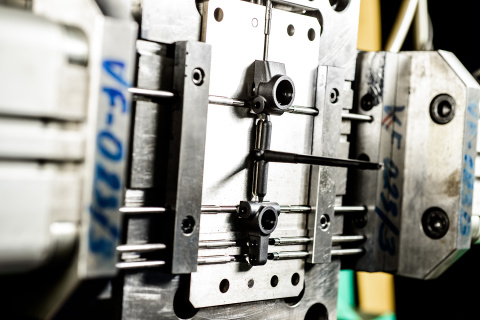
(click to enlarge) |
|
|
|
After several months I was becoming more satisfied with the progress of this second version of prototype. The car was more stable and faster than the first version, but jump landings were still not to my liking, and cornering speed was still not what I wanted to achieve.
|
|
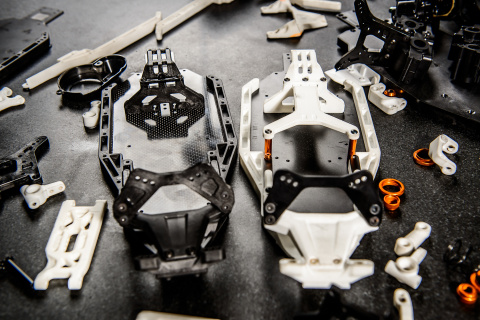
(click to enlarge) |
|
|
|
By spending more time, I started to perfectly understand in detail each various flex and what influence they had on cornering speed, bumps, landing, jumps, traction, etc. Then coming to a new track I right away knew which combination to put into the car and it worked very well right from the beginning. Any time I had a feeling that I found the proper combination of parts, I had Juraj check the same combinations on his car as we needed to be sure that this combination is not only suitable to my driving style but it is also good for the regular drivers like Juraj. Luckily, most of my findings & feelings of the combinations felt the same to Juraj and there were only a very few situations where he would not agree. It was funny but the more frequent situations used to be when I told Juraj that I felt a difference between mixture A and B in a slight improvement in the corner and by an improved drive through chicane⦠but Juraj did not feel any difference between them, so for him it did not matter which one to use. But for me for high-competition racing, I felt the difference and knew which one would be the better one.
|
|
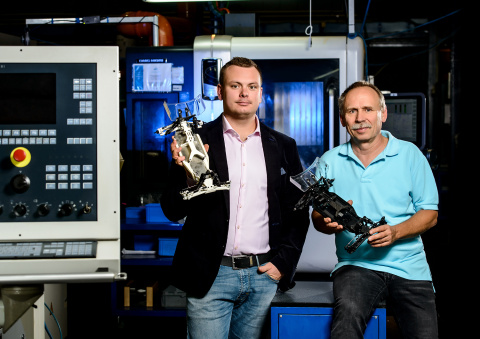
(click to enlarge) |
|
|
|
Most of the testing of this prototype was done during the wintertime, and we perfectly fine-tuned the car for high-traction conditions. After a lot of work we knew we had a car that worked really well on carpet and would very likely perform great on astro as well. After the wintertime we were finally able to get to outdoor tracks. We were of course nervous as I knew that the track conditions would be all different and would determine if the work we had done in the last few months was in the right direction or not.
|
|

(click to enlarge) |
|
|
|
To our disappointment the car did not work so well in low-traction conditions like it had on high-traction tracks. At first we thought that we just needed to find the proper composite mixtures and test them in a combination with different chassis material, either being it composite, aluminum, or graphite. So at this stage I spent countless hours at the outdoor tracks testing this & that, changing parts back & forth, but still nothing to our total satisfaction. We needed a car that would work great not only in high-traction conditions but also on medium- or low-traction tracks. The longer I tested outdoors, the more I got depressed. We had been working on this project for 2 years already and it seemed that we were right back at the beginning.
|
|
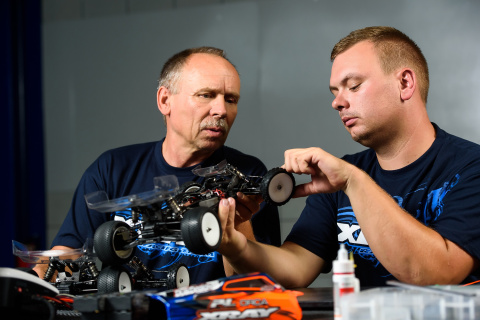
(click to enlarge) |
|
|
|
To be certain that it was not only my personal feeling, we had Juraj doing the same tests and unfortunately he confirmed the same things. We spent some more time testing different ideas, we made small progresses but not the serious improvements that we badly needed. We actually felt that the first prototype ⓠdespite being a hybrid prototype ⓠworked better in very-low traction conditions. As such we came to the decision that we needed to change this prototype and focus on chassis flex and weight distribution for low-traction conditions. Those days, the Dremel® Tool was our best friend and we improvised and tested again many different things over & over.
|
|
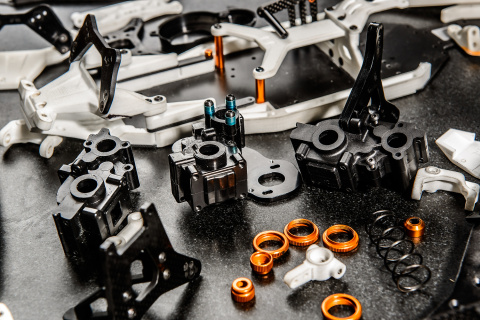
(click to enlarge) |
|
|
|
The more we worked on the car, the more we were convinced that we needed a different weight balance and different flex of the car for low-traction tracks. It was a very disappointing moment, but we had to face reality and admit that we needed to go back to the drawing board and make some serious changes if we wanted to have a car that was fully competitive even in under low-traction conditions.
|
|
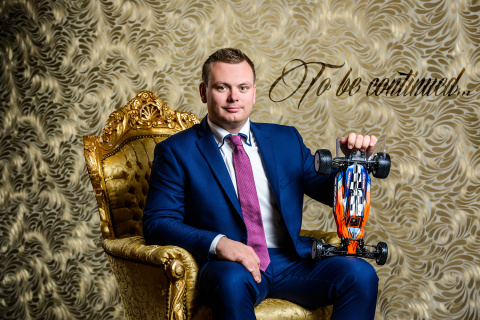
(click to enlarge) |
|
| Archive: |
|
Column #1 - Behind the Scene Stories
Column #2 - Worlds Flashback
Column #3 - T2'007 Debut
Column #4 - Designing the T2'007
Column #5 - Worldcup Review and NT1 Testing
Column #6 - Developing and Designing the NT1
Column #7 - Developing and Designing the NT1 - Part 2
Column #8 - Back to the Races
Column #9 - XT8 Truggy Development
Column #10 - Touring Car Development
Column #11 - Bling-bling Mentality
Column #12 - Hot Summer Washout
Column #13 - New Electric Touring Car
Column #14 - Off-road Development
Column #15 - My micro love
Column #16 - Back in the Dirt
Column #17 - Worlds Preparations
Column #18 - 808 Tests & Stress
Column #19 - Excited for the Worlds?
Column #20 - Statistics, Expenses Sheets, Production Analysis, Calculationsâ¦
Column #21 + Column #22 - Euros + Euros + Worlds
Column #23 - The Busiest Season Ever
Column #24 - In Between the Worlds
Column #25 + Column #26 - Well Developed or Overdeveloped?
Column #27 - Back to The Future
Column #28 - 2009 Kick-off
Column #29 - Crazy what?
Column #30 - Last indoor race of the season
Column #31 - Getting into summer season
Column #32 - Heading for the Euros
Column #33 - Testing - Always last minute, always new ideas
Column #34 - European Champion - title celebration
Column #35 - Time to move on
Column #36 - National Heroes
Column #37 - 2010 ready
Column #38 - Decade of Triumph
Column #39 - 2010 Racing Calendar
Column #40 - DHI, ETS & NĂĽrnberg Show
Column #41 - World Championship Practice
Column #42 - EC indoor, EC 1/12, Silverstate, LRP Masters, Neo
Column #43 - Nationals All Around
Column #44 - Warm Warm-ups, Challenging Challenges
Column #45 - Electric Touring Worlds 2010
Column #46 - Team XRAY - World Champion!!!
Column #47 - Summer Vacation, 30x USA Champion Title
Column #48 - T3 Saga Continues
Column #49 - RX8 â“ What? How? When?
Column #50 - The Making of the RX8 â“ Part II
Column #51 - Shake It, Baby, Shake It...
Column #52 - Racing Season â�11 Full Running
Column #53 - From On-road to Off-road
Column #54 - Testing and Once Again⦠Testing
Column #55 - Half of the EC Championships â“ Done!
Column #56 - Summer is Goneâ¦Euros are Done
Column #57 - Never-ending Development
Column #58 - From XB8 to XB9
Column #60 - 2012 Season Running
Column #61 - Crazy Months
Column #62 - ETS Champion
Column #63 - 2012 Racing Summer Summary
Column #64 - Making the T4, Part 1
Column #65 - Making the T4, Part 2
Column #66 - Making the XB4
Column #67 - Making The XB4 Pt. 2
Column #68 - Winning Excitement!
Column #69 - Making XB8
Column #70 - Making the RX8
Column #71 - Martin Hudy talks T4â™15 â“ Exclusive Interview
Column #72 - Making The T4â™15
Column #73 - Making The X1
Column #74 - 2014 Overview
Column #75 - Martin Hudy Talks NT1â™15 â“ Exclusive Interview
Column #76 - Making Of X12â™16 Background Story By Alexander Hagberg |
|























